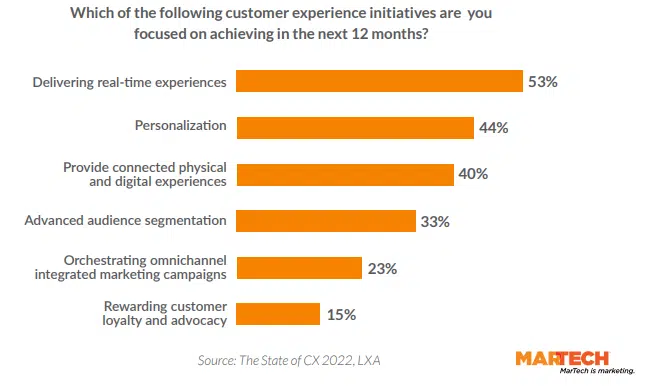Does your organization need a marketing automation platform?

The benefits of using a Marketing Automation Platform start with real-time, personalized, omnichannel experiences — but they don’t end there.
Does every marketing organization need a marketing automation platform? There are so many use cases it’s hard to imagine most marketing teams won’t find compelling reasons to automate at least some of their processes.
Though MAPs aren’t the newest tools in marketers’ tech stacks, they are still central to the business strategies of both B2B and B2C companies, especially those in the ecommerce space. MAPs help businesses automate and streamline their marketing efforts by providing a wide range of features and functionalities, such as automating repetitive tasks and workflows.
Real-time, personalized, omnichannel experiences
Marketers are using the tools at their disposal, including marketing automation platforms, to deliver real-time, personalized, omnichannel experiences utilizing advanced audience segmentation, with a survey of CMOs conducted by LXA finding that these are some of marketers’ highest-priority initiatives.

Marketing automation platforms for ABM
In the B2B arena, where marketing automation originally established itself as a key technology marketers are increasingly adopting account-based marketing (ABM) practices, with 40 to 60% of programs currently leveraging marketing automation platforms to further these strategies, a survey conducted by Momentum ITSMA and the ABM Leadership Alliance found.
“We’re in a phase now where companies see tech investment as a number-one priority,” said Will Nicholls, Chief Customer Officer of Momentum ITSMA, in a podcast on the topic. “We’re seeing more and more adding tools to automate and create greater leverage for existing platforms, in a sensible way that still preserves the principles of ABM.”
The benefits of marketing automation
The proliferation of channels and devices makes it difficult to target prospects with the right messages, on the right devices, at the right times. The rapid shift to all-online interactions sparked by the COVID pandemic also raised the level of competition in the inbox, so relevant messaging is more important than ever.
In the B2B arena, prospects are managing more of the buying process themselves. They are creating short lists of vendors by researching brand websites and social channels without ever speaking to a sales rep. Being effective in this environment means marketers must be creative, targeted and aligned with sales goals; they must also have visibility into buyer attributes and behaviors.
Challenging market dynamics and increased ROI pressure make these potential benefits of a MAP more attractive than ever.
Increased marketing efficiency. Automating time-consuming, manual tasks around content creation, management and personalization; campaign scheduling and execution; data hygiene (i.e. duplicate or inconsistent data residing in various silos); communication with sales; and lead nurturing saves time and improves productivity. The incorporation of AI and machine learning — which we expect to grow dramatically in the coming years — will drive even more efficiency, as these tools become more sophisticated and can pick up more and more of the weight of repetitive tasks. One especially promising area is the potential for AI-generating personalized content for messaging, landing pages and campaign creative, with the technology determining how audiences should be segmented and who should receive what version.
Enhanced ability to generate more and better-qualified leads. Marketing automation can combine multiple criteria, including demographic, firmographic and behavioral data with a lead-scoring system to generate and identify sales-qualified leads. The addition of AI and machine learning makes this process even more effective, as the tools can bring together a large amount of data and may pick up on patterns missed by humans.
A multichannel view of prospect behavior. Today’s MAPs integrate multiple channels and devices — including social media and mobile — to create more comprehensive prospect profiles and holistic views of prospect behavior. Platforms with strong ABM capabilities let marketers see the behavior of a buying group, as well as learn the interests of each individual in it.
Better alignment of sales and marketing goals. MAPs can help align sales and marketing efforts to ensure that sales reps are working with sales-ready leads. By jointly setting scoring parameters and defining qualified leads, sales and marketing work better together. Marketing focuses on building relationships with early-stage leads, which lets sales work on closing the
most highly qualified prospects.
Improved lead conversion and ROI. Numerous studies have found that using a marketing automation system can increase conversions. Forrester found that B2B marketers who implement marketing automation have a 10% increase in their sales pipeline contribution. It can also result in a 15% increase in sales productivity and a 12% decrease in marketing overhead, according to tech research firm Nucleus Research.
____________________________________________________________
This article was written by MarTech and originally published here.
